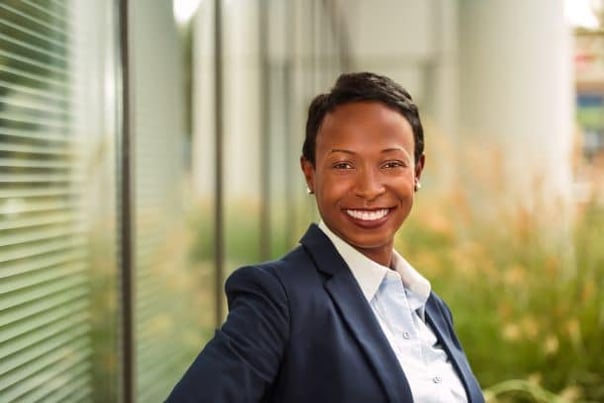Go to sleep. Stop thinking. Worrying. Just … stop. And go to sleep. If you fall asleep now, you’ll get almost four-and-half hours of sleep. Well, now it’s four hours of sleep. You can survive on that. Just go to sleep right now. Three hours is enough, too, I guess …
Oh, the lullaby countless women everywhere sing themselves to (not) sleep.
Sound familiar? Maybe way too uncomfortably familiar if we’re being honest with ourselves.
Married. Single. Working. Staying at home. Kids. No kids.
Despite our differences, one thing is certain: Women everywhere – all ages, professions, lifestyles, races, and wages – are failing to ask for help.
But why?
We’re smart. We speak our minds. We’re intuitive – intuitive and empathetic enough to immediately recognize when someone else needs help. And then, in the mad flailings of our own drowning, we will offer that help to anyone else at any time.
But not ourselves.
As we discussed at the beginning of the month, women need help. Here, we share the firsthand account from a case study of one of our clients who shared her story of when she realized she needed help from a Virtual Assistant – and what life looks like for her now that she’s got it.
Spoiler alert: You may not be ‘fine’ – and that’s just fine.
Meet Kaye-Ann Sadler.

Kaye-Ann is the Senior Administrative Manager of the Nell Hodgson Woodruff School of Nursing with a Lean Six Sigma Green Belt certification.
She’s responsible for managing office managers and administrative assistants, collectively supporting all the faculty and clinical instructors within the school.
And while she has a staff that has been with Emory for 15-20 years, they didn’t necessarily possess the skills to meet the needs of the faculty, as initially, their tasks were typically relegated to documents, support, emails, and scheduling.
But over time, Kaye-Ann needed people well-versed in research, understanding biosketches, and submitting proposals – and running with them.
Even still, when her Director of Operations came to her and suggested virtual support, Kaye-Ann was admittedly skeptical.
“I can honestly say when Adam came to me with it, I was extremely reluctant,” she says. “I just could not see how we could have an external person working as if they were internal.”
Kaye-Ann needed someone who could bridge the gap for faculty wearing two hats: Those going between teaching in a classroom to concurrently conducting research- or clinical-intensive studies.
And in true academic fashion, Kaye-Ann decided to conduct some research of her own.
“We had a whiteboard session – Adam, myself, and two office managers,” she shares. “We carved out about an hour and a half, and we listed our core competencies.
“What are the main things that our admins are asked to do? And what are the secondary competencies that we're asked to do – the one-off things? And then we made a list. One side was a virtual assistant, one side was an administrative assistant.
“And seeing it on the board was like, ‘Wow. We can actually do this.’”
Enter: A BELAY VA
And do it they did, contracting with BELAY VA Marlaine.
Marlaine has made the process seamless, teaching Kaye-Ann to be a better communicator while supporting the staff and professors well, too, being proactive and unafraid to ask questions and learn.
Her openness made the relationship progress rapidly, prompting Kaye-Ann to hire two more virtual assistants.
“She made the process easy,” Kaye-Ann shares. “If we didn't tell the faculty that she wasn't an Emory employee, they would not know. It's partially her having academia experience and her level of professionalism and openness. “If she doesn't know something, she'll say she doesn't know and ask the right questions in order to figure it out.”
And now, with two other virtual assistants, Marlaine’s role has evolved even more.
“I do the onboarding, and then email each department – ‘Can she get access to this? Can you get access to that?’” Kaye-Ann shares. “So it's a little more seamless for the new VAs, but she's been instrumental fielding any questions from them as time goes by. So every time we have a new [VA], we'll do an introductory call and have her on it.”
Now, her VAs submit weekly reports on how they use their time, which helps Kaye-Ann assess where time is being spent and what is being worked on.
“I don't communicate with the other VAs regularly,” she says. “Marlaine has taken the lead and just started having monthly meetings that I join from time to time just to touch base. I've been checking in with the people that they're working with directly and they have nothing but high praises to sing about them as well.”
The Life-Changing Results
Let’s put it this way: Kaye-Ann started with 65 hours per month with Marlaine and has since increased her contract to 110 hours per month.
“And honestly – this is just me being one-hundred-percent honest – she is just amazing,” she adds.
“Everything has been really smooth and just overall amazing,” she adds. “I could not have imagined that this is how it would've turned out because, again, I was skeptical in the beginning. Now, I actually tell my colleagues and other institutions that we're doing this virtual assistant thing and it's really working out.
“Now, I'm all for it!”
Are you ‘fine?’ Could you be more ‘fine’ – or actually fine? We can help – and getting started is the easiest thing you’ll do today.